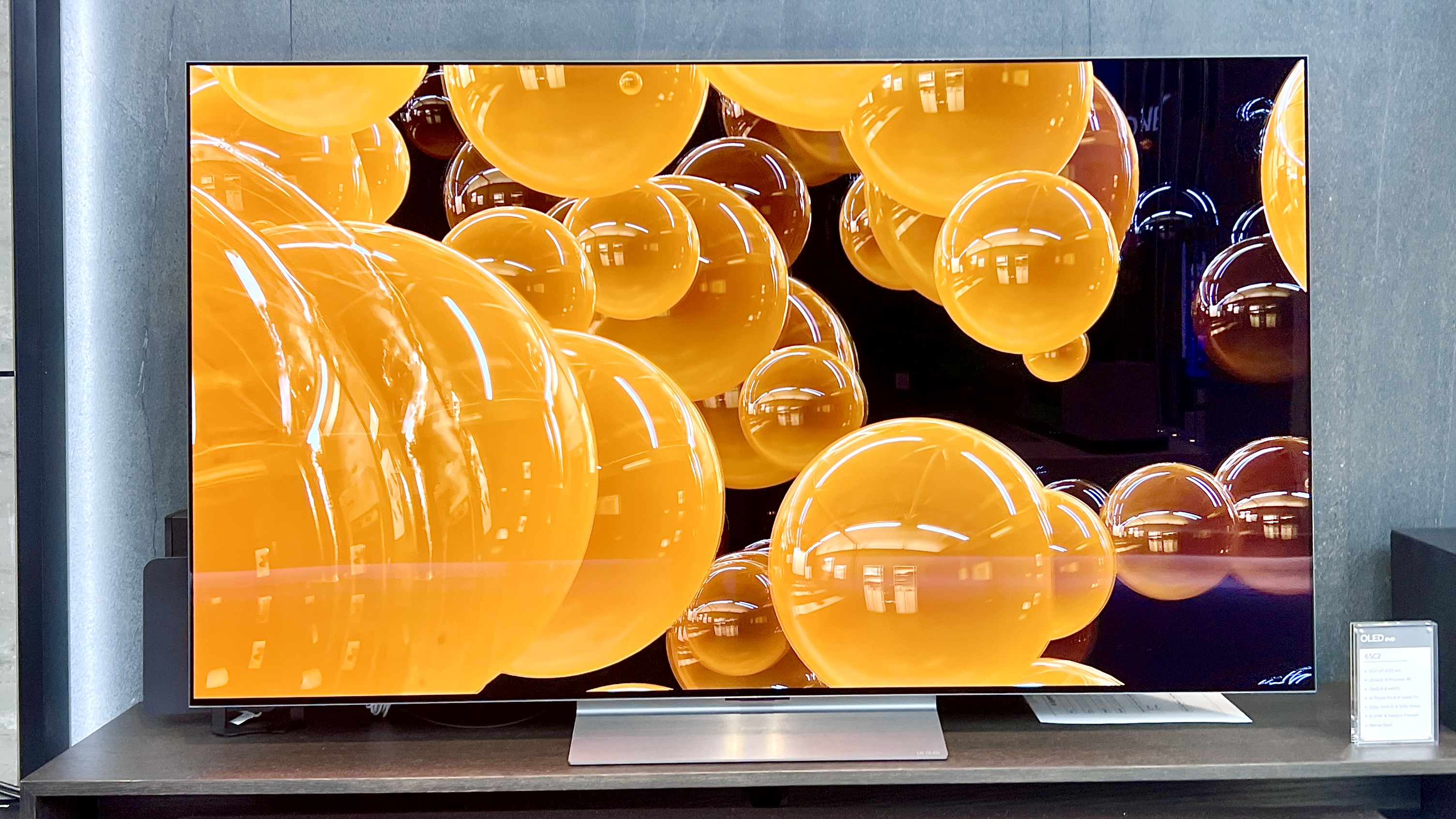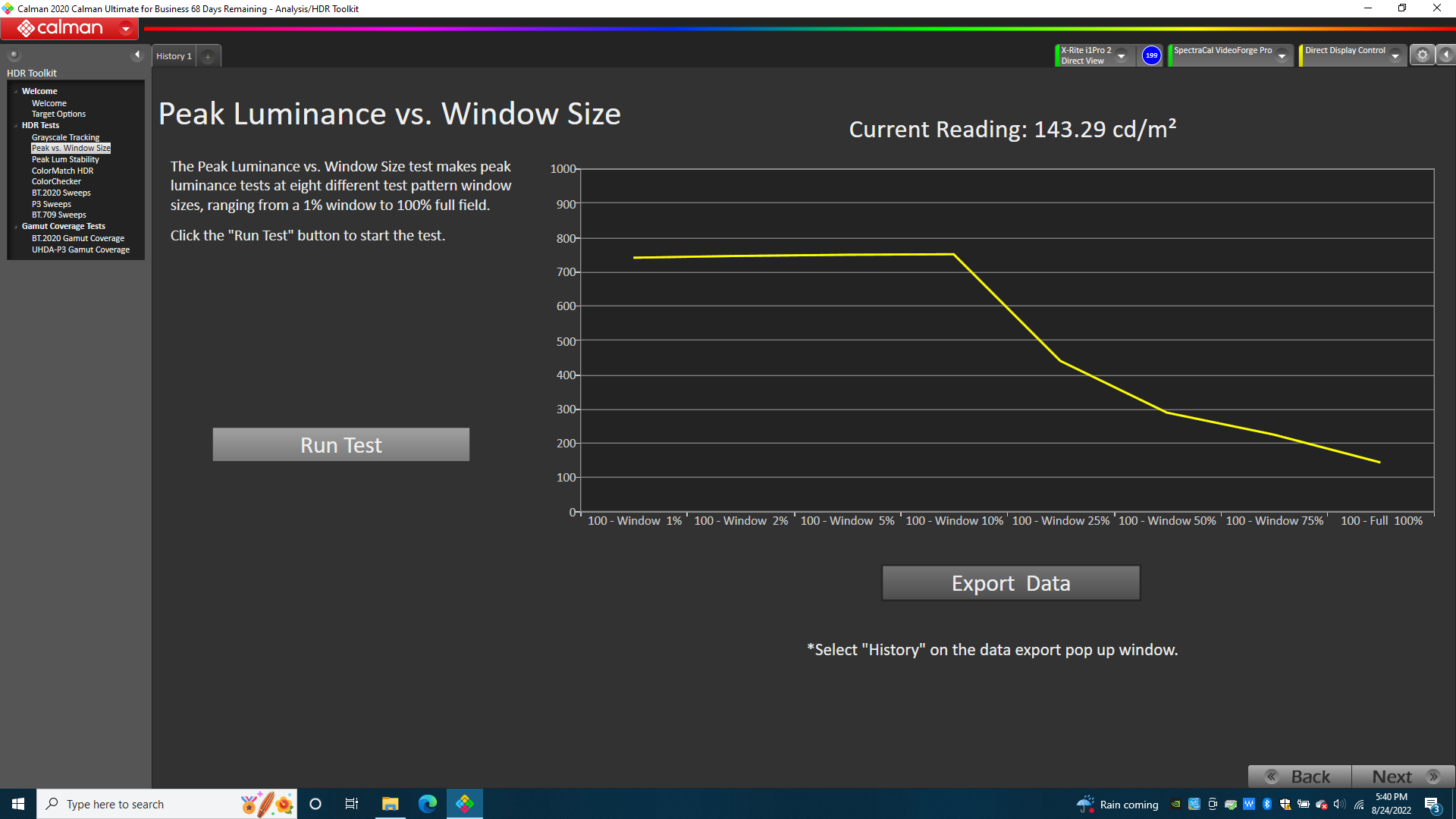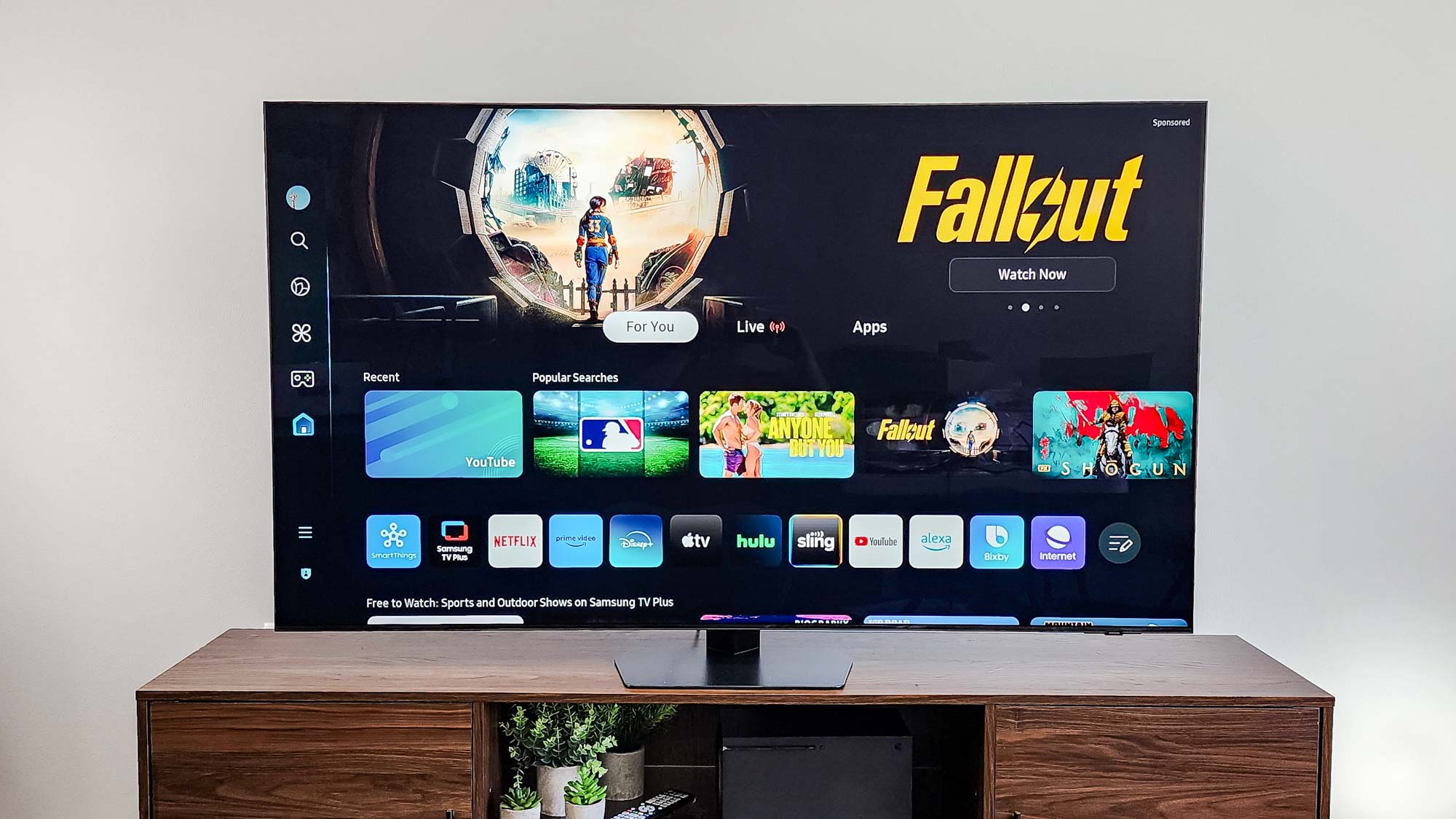
At Tom’s Guide, we take pride in the fact that we actually test TVs before we review them – and that means we get some interesting data points that you can’t find elsewhere.
For the most part, our data usually lines up with the data we’re given by the manufacturer. Sometimes it even exceeds the results of what we were told…but sometimes it doesn’t.
The LG C2 OLED, which recently went through our rigorous testing, passed all its tests with flying colors. And yet, I’m still concerned that the results we’re getting may not be as bold and as ambitious as LG might’ve said they’d be when the TV was first announced.
The issue? LG’s new OLED Evo panel is brighter than before, but only by about 50 nits. Considering LG promised a 20-30% increase in brightness compared to older models, I have to say I'm a bit disappointed with those results.
What’s the OLED Evo panel?
The OLED Evo is LG’s second-generation OLED technology that made its debut last year, when LG announced that the LG G1 OLED — its flagship 4K OLED TV from last year — would have a new panel technology that would offer, among other things, increased brightness.
According to LG, that increased brightness was due to each of the self-emissive pixels in the OLED Evo panel producing more light per pixel than before. But how much brighter these pixels would be was always a matter of contention.
The numbers provided by LG claimed that the new OLED Evo TVs would be 20%-30% brighter than LG's previous OLED TV models, a number we never quite hit in our tests — this year or last year with the LG G1 OLED.
Get instant access to breaking news, the hottest reviews, great deals and helpful tips.
In fact, when the LG G1 was first introduced, one of our editors even mentioned how underwhelmed she was with the increased brightness — an issue I’m now seeing with this year’s LG C2 OLED when compared to last year’s LG C1.
It’s disappointing that the OLED Evo panels aren’t as big of an evolution as LG made them out to be — and might give you pause before shelling out for a 2022 LG OLED when a 2021 OLED is nearly as good.
It should be noted that the LG C2 OLED is brighter than the LG C1, just as the LG G1 OLED was brighter than the LG GX OLED that came before it. It’s disappointing that the OLED Evo panels aren’t as big of an evolution as LG made them out to be — and might give you pause before shelling out for a 2022 LG OLED when a 2021 OLED is nearly as good.
What do the numbers say?
In our latest batch of tests performed last week, the OLED Evo-sporting LG C2 OLED was able to hit 800 nits exactly in Standard mode with HDR content. When we retested the LG C1 OLED from last year, we were able to get 749 nits with the same parameters.
So how much brighter was the LG C2 OLED vs the LG C1 OLED? It was only 51 nits, or around a 6% difference in brightness between the two models.
We were able to replicate the results of LG’s claims when we measured a 100% window brightness where we saw 165 nits on the LG C2 vs 131 nits on the LG C1, but that 25% difference is going to feel a bit underwhelming when you’re only talking about 30 nits.
For reference, Mini-LED TVs with quantum dots like the Hisense U8H or Sony X95K output 900 and 600 nits, respectively, in the same 100% window HDR test.
Admittedly, the LG C2 with its Evo panel are performing well for an OLED TV — better than the older C1, even — but the increase in brightness just isn’t as big of a boon as LG is making it out to be.

So what TV should you buy?
I’ll have to wait for our full review of the LG C2 OLED to go live before I can advise you one way or the other on the new model.
That said, with just the hard data in front of me, the LG C1 OLED looks like it offers similar performance at a reduced price.
If you’re concerned about the lower overall brightness of the OLED because you typically watch shows in a room with lots of ambient light, you might want to consider going for a QLED TV instead. One of the two TVs we mentioned earlier, the Hisense U8H, offers a great performance for under half the price of an equivalent-sized LG OLED TV.
Deciding between the different types of TVs can be tough and ultimately will come down to the type of environment you watch TV in and how much you’re willing to spend, but if you want more recommendations be sure to check out our best TV in 2022 guide for more information.

Nick Pino heads up the TV and AV verticals at Tom's Guide and covers everything from OLED TVs to the latest wireless headphones. He was formerly the Senior Editor, TV and AV at TechRadar (Tom's Guide's sister site) and has previously written for GamesRadar, Official Xbox Magazine, PC Gamer and other outlets over the last decade. Not sure which TV you should buy? Drop him an email or tweet him on Twitter and he can help you out.

